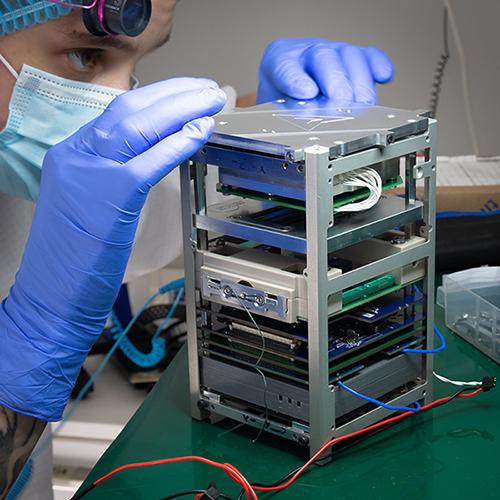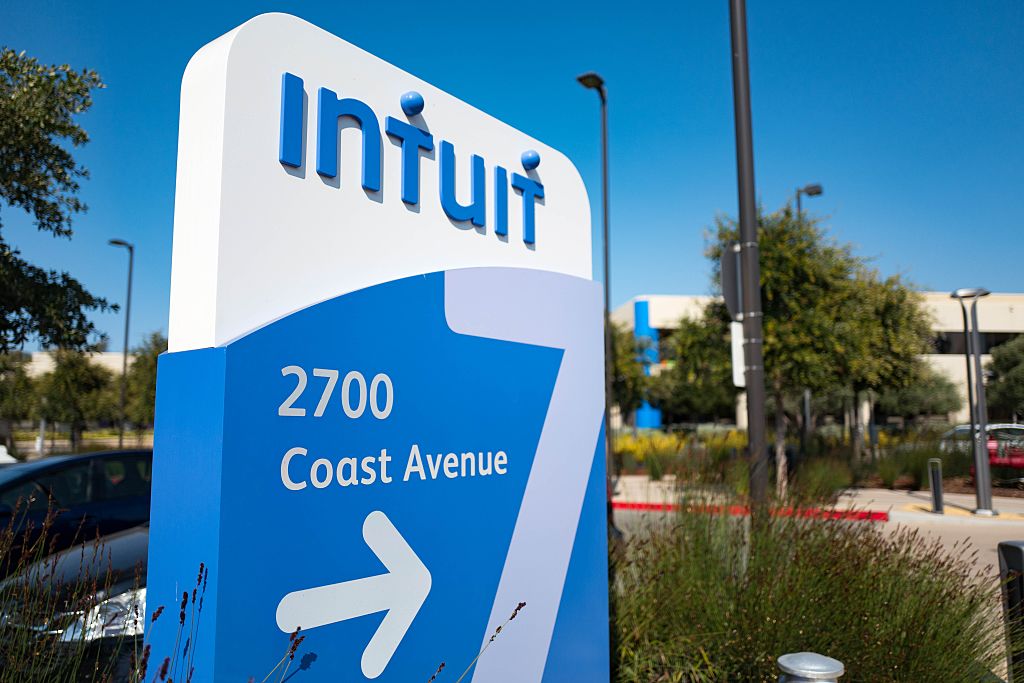News: Grab your free Disrupt Expo Pass to access these breakout sessions at Disrupt next week
As we get closer to TechCrunch Disrupt 2021, the list of our special breakout sessions just gets bigger and better. The wide range of tech startups is on full display in these sessions hosted by our partners. What’s more, these smaller, interactive gatherings pack a lot of advice, insight and value — with plenty of
As we get closer to TechCrunch Disrupt 2021, the list of our special breakout sessions just gets bigger and better. The wide range of tech startups is on full display in these sessions hosted by our partners. What’s more, these smaller, interactive gatherings pack a lot of advice, insight and value — with plenty of time to get answers to your pressing questions.
A note from the home office: Get a free Expo Pass to access all of these session and more for a limited time here.
Here’s the latest round of breakout sessions you can join on September 21-23. Check out the Disrupt 2021 agenda for the exact dates and times and save room in your schedule to expand your mind and your opportunities.
Using Visual Communication to Build Your Startup’s Brand
In today’s increasingly visual world, visual communication is the new currency between brands and their customers. So what are the opportunities startups and their clients can use to enhance brand connection? Join Canva’s Strategic Account Executive, Spencer Llewellyn, to learn how the visual economy has transformed the tech industry and powered the evolution of branding and customer experiences. Presented by Canva.
The $49B Developer Landscape
Over the past 20 years, IT has witnessed a power shift from CIOs to developers. Any developer with an idea has been given empowerment and authority to innovate. This has led to the creation of a 1,000 companies that create products used, influenced or bought by software development teams. In this session, we’ll discuss the 17 landscape segments, the CIO transition from decision maker to governor, and the developer “pay for value” mentality causing the emergence of product-led growth (PLG) businesses. Presented by Dell for Entrepreneurs
The Dark Matter of Workflows: Business Technology’s Big Opportunity
According to CERN, the European Organization for Nuclear Research, we’re only familiar with 5 percent of matter and energy in the universe. The rest is dark. The same can be said about the nature of work. Organizations only have visibility into a small percentage of the actual work taking place because the complexities surrounding it have been growing exponentially. With enormous amounts of data, systems, applications, workflows and more floating around, leaders and employees feel the gravitational mass of work in their stress levels, yet there’s no clear unified system of record for it. The most successful startups will be the ones that seek to understand, uncover and harness the dark matter of work now — before they launch into hypergrowth mode. Andrew Filev, founder of a leading collaborative work management platform that went from bootstrapping to billion-dollar acquisition, will discuss how he’s helping startups bring to light the dark matter of work and harness workflows for operational efficiencies. Presented by Wrike.
Thrive with an Untethered Workforce
Shark Tank investor and cybersecurity leader, Robert Herjavec chats with Ben Wright, founder and CEO of Velocity Global, about how to thrive with an untethered workforce. The mindsets of employers and talent has converged to work with anyone, anywhere, anytime, anyhow. Choice is paramount: employers engage all types of talent from full-time to project freelancers; people live anywhere, work for anyone, in a work-life balance. When priorities align, the possibilities are endless. Presented by Velocity Global
TTA Taiwan Pavilion Pitch-off Session: Healthcare and Enterprise
Taiwan Tech Arena (TTA) champions entrepreneurship and innovation to build a vibrant global startup ecosystem in Taiwan. Twenty out of 40 promising TTA startups will unveil their latest innovation related to Healthcare and Enterprise solutions. Presented by Taiwan Tech Arena.
How to Approach Fundraising from Corporate VCs
Global CVC funding hit an all-time high of $73B in 2020. Corporations are increasingly investing in the startup community and can be a valuable resource beyond capital. But not all corporate VCs are the same. Understanding a corporate investor’s strategy, mandate and processes can improve how startups successfully fundraise from corporate VCs. Intuit Ventures recently invested in Clearco, a $2B+ startup that is disrupting traditional VC with founder-friendly, equity-free capital. Join Shveta Mujumdar (VP of corporate development at Intuit), Andrew D’Souza (co-founder and CEO at Clearco), and Michele Romanow (co-founder and president at Clearco) to learn what corporate VCs look for in an investment and how to best position your company and showcase how you are solving your customers’ biggest problems. Presented by Intuit.
TTA Taiwan Pavilion Pitch-off Session: Smart Tech
Taiwan Tech Arena (TTA) champions entrepreneurship and innovation to build a vibrant global startup ecosystem in Taiwan. Twenty out of 40 promising TTA startups will unveil their latest innovation related to Smart Tech. Presented by Taiwan Tech Arena.
The Moore’s law of software – onboarding time
For software companies, onboarding is the single barrier to scaling. For software buyers, the time it takes to adopt products stifles innovation regardless of industry. David Boskovic, CEO and Co-Founder of hyper-growth startup Flatfile, dives into the fundamental economics of data exchange and how it’s the Moore’s law of software. One prediction: Boskovic expects that onboarding time will halve every year, driving exponential growth in software innovation over the next decade. Presented by Flatfile
Electric Generation: The Next Frontier For American Business
This session will explore the ways in which smart electric mobility impacts businesses, and what a transition to electric will look like for commercial fleets. Host Chuck Nice will be joined by TechCrunch panelist Tim Cannis, CEO of Ford Pro, and Sam Abuelsamid, longtime engineer in the automotive industry-turned auto industry journalist. Nitty-gritty car talk will blend with discussion of sustainability and imagery to elaborate on the future of the topic. Presented by Ford
Accelerating your direct-to-consumer business
The direct-to-consumer landscape has radically accelerated over the past few years, becoming an even more critical lever for brands to build relationships with customers than ever before. This is a new era in which brands must understand the shifts in the customer journey to drive transformational business growth to be ready for what’s next. Join Google and Lenovo to understand key strategies to enable business success and delight customers in 2022 and beyond. Presented by Google
Top Japanese Startups pitch their exciting new tech live
Top Japanese Startups pitch their exciting new tech! Come watch the live JETRO pitch session 9/23 at 1PM PST. Learn about the latest advancements from Japan in fields like Environment, Entertainment, Wellness, and Fitness. Companies include AC Biode, AMATELUS, everblue, hemVR, NeuralX, PJP Eye, R’s KOSO, Samaria, SpoLive Interactive, and XPAND. Presented by JETRO
Accelerate your growth using agile market research throughout the product lifecycle
Conducting market research at each stage of your product lifecycle is a critical component to a successful product launch and sustained growth in an increasingly competitive market. While traditional market research can be costly and require a specialized team, agile market research software makes it possible for anyone on your team to get the insights you need fast. Join Momentive.ai to learn how to conduct your own market research to identify what kinds of products and features users value most, get insight into the competitive landscape, and track your brand’s awareness and shifting perceptions over time. Presented by Momentive.ai
How to build a remote-first engineering culture
How do you build culture with globally dispersed engineers? Marcelo Lebre, COO and co-founder of Remote and former VP of Engineering at Unbabel, understands better than anyone the challenges of scaling an international workforce of engineers. In this talk, Marcelo will teach you how to adopt a remote-first mindset and how to scale a distributed team of engineers while retaining your culture. Presented by Remote
Scaling Businesses and Creating Value with the Everywhere Workforce
As startup founders scale their companies, increase velocity and eye potential exits, flexibility in talent that can execute a lean, mean go-to-market strategy is quickly becoming not only a necessity but a differentiator. Join Insight Partners’ Hilary Gosher and Ivanti’s Melissa Puls in conversation with Upwork’s Tim Sanders about how hybrid workforces are the new cloud when it comes to accelerating revenue, value creation and businesses overall. Presented by Upwork
How Netflix Saved Cybersecurity – Roundtable
We’ve all heard that membership has its privileges, right? In fact, the membership Economy has forever changed why and what we buy…until we go to work. For many of us, the tools we buy at work are still tied to old-school ownership models: The millions of dollars we spend on technology solutions and services tied to multiyear licensing agreements effectively hold us hostage regardless of product efficacy. In cybersecurity specifically,, the transactional nature of such purchases has not and cannot keep pace with the growing costs of breaches or the ease with which hacks can be executed. We’ll show how membership–the Netflix model–can successfully replace ownership and usher in a whole new taxonomy of cybersecurity defense. Presented by Cyvatar
CISO2CISO: On the Wrong Side of Disruption – Roundtable
Disruption isn’t always a good thing. Often, we fear it. We resist prioritizing even necessary change out of fear that the disruption it may bring will be more detrimental than beneficial. Are we wrong? Are we right? Cyvatar Co-Founder and ex-global CISO Craig Goodwin and Alteryx CISO Billy Spears debate both possibilities as they look at the ways we prioritize risk and disruption at work. Presented by Cyvatar
Why Can’t We Stop Ransomware? – Roundtable
This will be an open discussion with participation from audience members about the challenges and consequences of our current approaches to defending against ransomware attacks. The reemergence of REvil over the Labor Day weekend and the uptick in ransomware attacks on schools and universities remind us that hacks for ransom are still among the most attractive and lucrative threats around. Our open forum will uncover ways to combat malicious actors better and thwart the successful execution of ransomware. Presented by Cyvatar
TechCrunch Disrupt 2021 takes place September 21-23. Don’t miss the big value in our smaller breakout sessions. Grab your free Expo Pass and, tune in and take away insight to help you build a better business.












